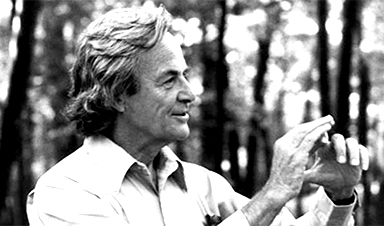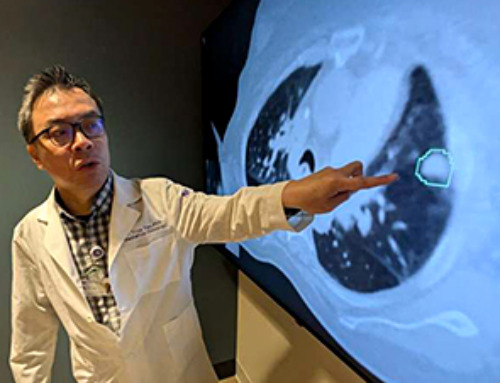 Richard Feynman gave his famous talk “There’s Plenty of Room at the Bottom” (Original Transcript Available Here : http://muonray.blogspot.ie/2012/12/ri…) on December 29th 1959 at the annual meeting of the American Physical Society at the California Institute of Technology (Caltech) as his vision on how physics and engineering could move in the direction that could eventually create nanotechnology.
Richard Feynman gave his famous talk “There’s Plenty of Room at the Bottom” (Original Transcript Available Here : http://muonray.blogspot.ie/2012/12/ri…) on December 29th 1959 at the annual meeting of the American Physical Society at the California Institute of Technology (Caltech) as his vision on how physics and engineering could move in the direction that could eventually create nanotechnology.
Really good ideas and strokes of genius are often manifest in the right questions being asked: How small can information be encoded? How can information be written? How can information it be read? All of these important “Hows” were asked by Feynman in a time when computers had to be put in large rooms and when the impending space race was forcing engineers to do some serious strategic thinking in making technology small enough to be lifted by rockets into space to function as serious tools in scientific exploration and defence.
Feynman himself may not have invented the technology we see in the development and continuity of the computer age, but the fact that even in the early 1960’s nanotechnology was being considered as a serious field of study was definitely a factor contributing to the boom in computer technology seen in the late 20th century and continues to reach more spectacular levels of sophistication in the 21st century.
Jump 25 years forward into the year 1984, when Feynman tries to retell his 1959 lecture from a more modern perspective in that many aspects of his vision have been fulfilled, particularly with the invention of the electron microscope, the atomic force microscope and experimental manipulation of the atomic scale of matter. Also discussed is the current practical field of photolithography for the manufacture of bipolar transistors and junctions used in computer chips done on an industrial scale and how this process continues with ever decreasing wavelength capabilities of lasers from UV to X-rays.
Feynman also discusses the boundaries of miniaturization and how the scale differences affect the function of certain aspects of technology as well as in nature. In the true spirit of Feynman, the discussion goes into the colorful details and gives diagrammatic examples of how this field had progressed from 1959 to 1984.
We can only imagine how Feynman would have felt about the modern developments in nanotechnology in the 21st century where entirely exotic principles of physics may begin to become technologically significant, including vacuum fluctuations and quantum entanglements. Without a doubt he would have found our developments exciting but always within the realms of understanding by studying the most fundamental language of nature, quantum mechanics, to bring our macroscopic brains into visualizing, however abstractly, the tiny machinery of nature.
Image Credit: Shutterstock.com
News This Week
Johns Hopkins Researchers Uncover a New Way To Kill Cancer Cells
A new study reveals that blocking ribosomal RNA production rewires cancer cell behavior and could help treat genetically unstable tumors. Researchers at the Johns Hopkins Kimmel Cancer Center and the Department of Radiation Oncology and Molecular [...]
AI matches doctors in mapping lung tumors for radiation therapy
In radiation therapy, precision can save lives. Oncologists must carefully map the size and location of a tumor before delivering high-dose radiation to destroy cancer cells while sparing healthy tissue. But this process, called [...]
Scientists Finally “See” Key Protein That Controls Inflammation
Researchers used advanced microscopy to uncover important protein structures. For the first time, two important protein structures in the human body are being visualized, thanks in part to cutting-edge technology at the University of [...]
AI tool detects 9 types of dementia from a single brain scan
Mayo Clinic researchers have developed a new artificial intelligence (AI) tool that helps clinicians identify brain activity patterns linked to nine types of dementia, including Alzheimer's disease, using a single, widely available scan—a transformative [...]
Is plastic packaging putting more than just food on your plate?
New research reveals that common food packaging and utensils can shed microscopic plastics into our food, prompting urgent calls for stricter testing and updated regulations to protect public health. Beyond microplastics: The analysis intentionally [...]
Aging Spreads Through the Bloodstream
Summary: New research reveals that aging isn’t just a local cellular process—it can spread throughout the body via the bloodstream. A redox-sensitive protein called ReHMGB1, secreted by senescent cells, was found to trigger aging features [...]
AI and nanomedicine find rare biomarkers for prostrate cancer and atherosclerosis
Imagine a stadium packed with 75,000 fans, all wearing green and white jerseys—except one person in a solid green shirt. Finding that person would be tough. That's how hard it is for scientists to [...]
Are Pesticides Breeding the Next Pandemic? Experts Warn of Fungal Superbugs
Fungicides used in agriculture have been linked to an increase in resistance to antifungal drugs in both humans and animals. Fungal infections are on the rise, and two UC Davis infectious disease experts, Dr. George Thompson [...]














Leave A Comment